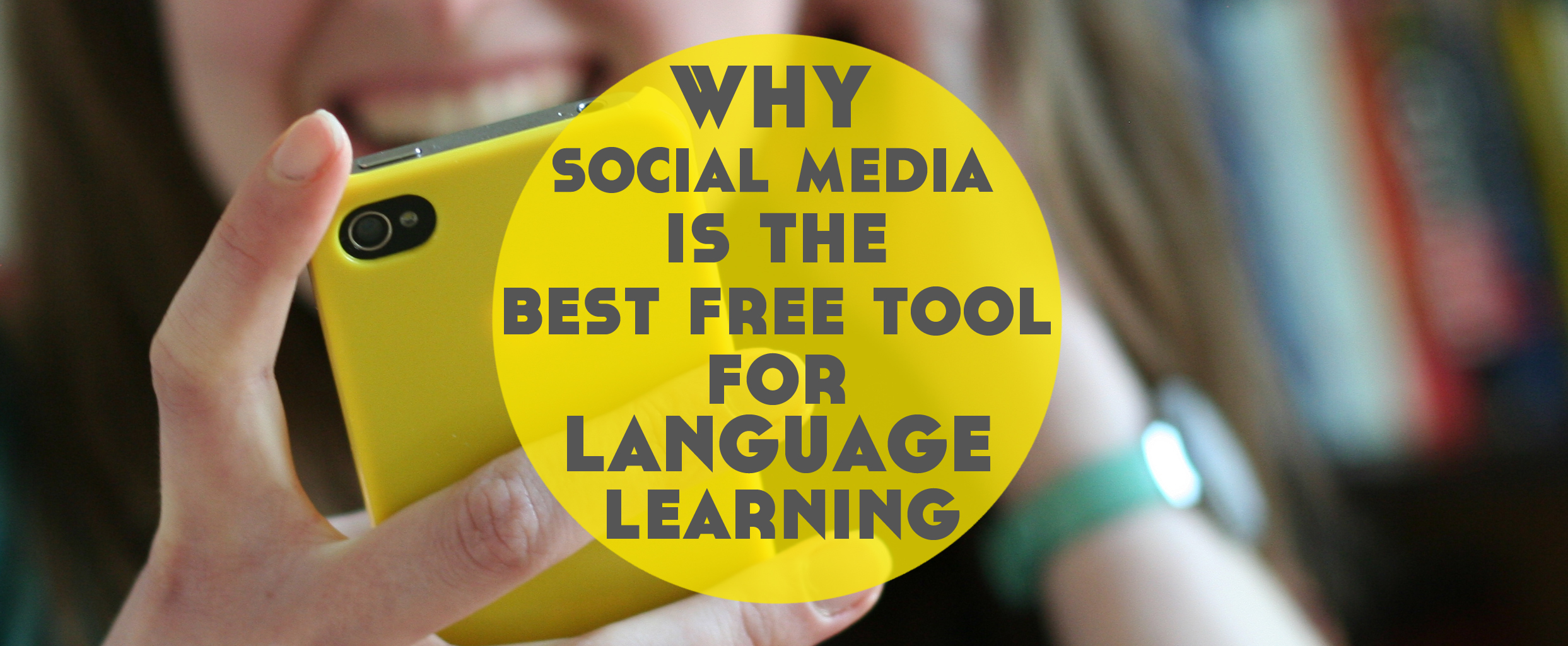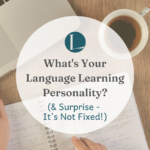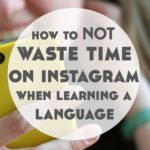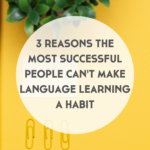November 15th, 2016
Why Social Media is the Best Free Language Learning Tool
When you first start learning a language, it might be because you’ve been strolling around your local bookshop and spotted a shiny new course book for a language you don’t speak. Or maybe you heard about a must-try app that will revolutionise your language learning. Eager to get on board, you download, buy, and consume…for about a week.
Sound familiar? Yup. We’ve all been there.
Well, maybe the best free language learning tool is a little closer to home…
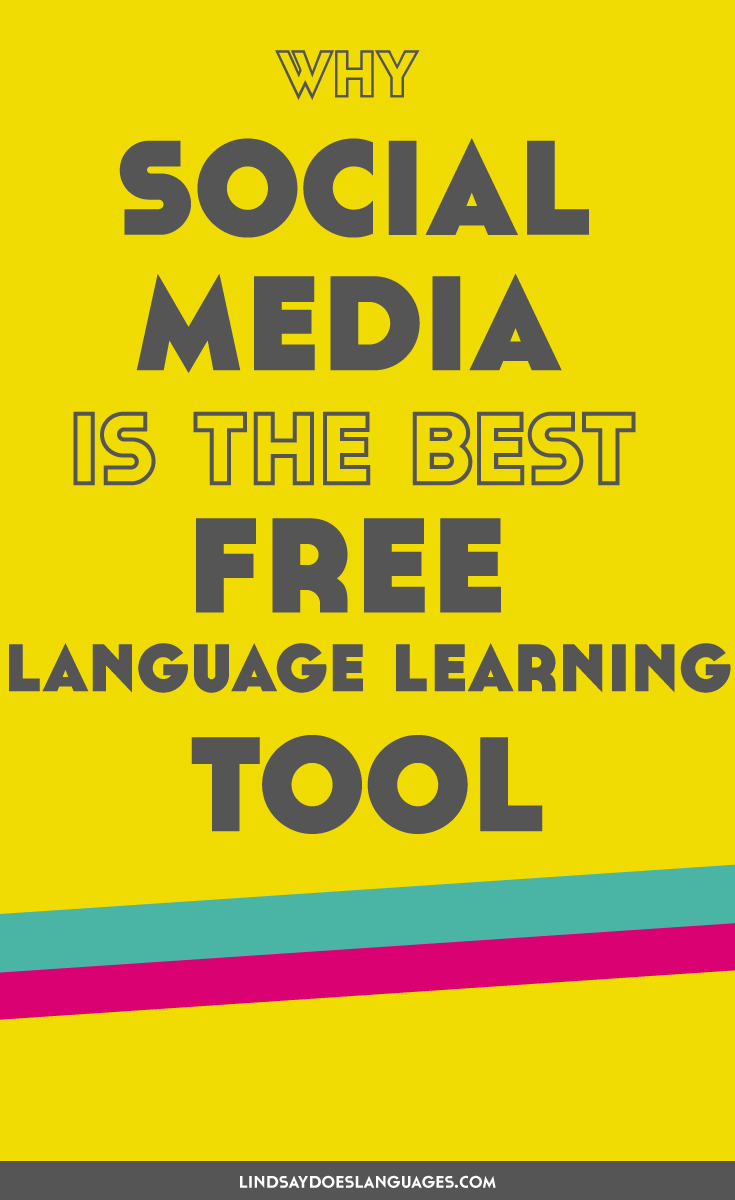
It’s a common truth by now that we need human interaction to communicate well in a language. Books, websites, apps…they’re all great, but eventually we need to get out there and show the world our skills we’ve learnt (and mistakes) and put it to the test with real people.
But what if those real people that speak the language you want to learn don’t live in your neighbourhood, or your town? What if you’re too shy to go to that meet up in the next city?
Another common truth that’s pretty well-established by now is that the internet has massively enhanced language learning. Every week, I get emails in my inbox inviting me to test out new websites and apps, all promising to be the ultimate in the latest language learning technology.
However, perhaps instead of looking too far forward, we need to bring our focus in slightly.
How did you start reading this blog post?
It’s possible that you typed lindsaydoeslanguages.com in the toolbar to see what’s new (if so, wow! Thanks!) but it’s more likely that you came here from a link on Facebook, Twitter, or another social media platform.
The platform itself doesn’t matter, but the subject does: social media.
Why social media?
I have two questions for you.
1. How much time do you spend on languages each day?
2. How much time do you spend on social media each day?
Ok, got your answers? Can I take a guess? Did you answer something along the lines of “not enough” for question one and something like “too much” for question two? You’re not alone.
No matter how much of a tone of disdain we add when we say the word “Facebook” or how much we mock teens for posting too many selfies on Instagram, social media has become an integral part of our everyday lives.
With events like the Arab Spring being aided by Twitter and millions of dollars being raised for charity from people getting buckets of ice cold water thrown on them, social media is undeniably relevant.
And that’s exactly why you should consider it for your language learning. Books are great, audio courses are great, but no resource is more current and up-to-date than social media.
After all, do you want to learn French to speak with Molière or with Molly the pretty French girl from next door?
Not only that, but social media now comes in a variety of mediums. There’s text, image, video – all of which you can consume or share yourself. For free. Yup, it’s pretty cool.
The Beginning
Social media has evolved a lot since it first became “a thing”.
Back when I was 16, I would go home from school to do my homework and sign straight into MSN Messenger. I’d do my French and Spanish homework, and then I’d chat to my friends. Two very separate parts of my evening…well, the homework may have been slightly interrupted by MSN. But my point is that my French or Spanish didn’t make their way onto MSN.
Then along came MySpace, where the biggest focus was the song you picked for your profile, the background you chose to represent your budding teenage personality, and the friends you selected for your Top 8. Again, no language here.
But as things have evolved with social media, so has my use of various platforms.
Earlier this year I gave a talk at the first North American Polyglot Symposium about using social media for language learning. It got me thinking. I was using social media for language learning, but why exactly was this useful? Why would people want to hear about this?
I realised that in addition to the well-understood aspects of language learning that are commonly tested (reading, listening, writing, speaking) there are 4 key components to successful language learning: accountability, documenting, connection, and progress.
And I realised that social media could be used for all of these components. Let’s take a look…
Accountability
You know I love goal setting. It’s been one of the biggest changes in my language learning over the past few years and one of the best changes in terms of success.
But setting yourself a goal and keeping it in your head is one thing – setting yourself a goal and telling others publicly is another. No prizes for guessing which is most likely to give you the best results.
You can use social media to hold yourself accountable with language learning using daily challenges, such as the Instagram Language Challenge.
You could join a community such as the #WeDoLanguages Facebook Group, where you can share your language learning goals with people who have the same interests as you and are therefore more likely to want to see you succeed than Bob your unfriendly neighbour.
Documenting
Social media aside, other new technologies have made documenting your language learning easier than ever. Gone are the days of needing a pricey video recorder or dictaphone to keep track of your speaking progress.
With all of that in your pocket, it’s even possible to do it wherever you are.
Of course, you could save your recordings directly to your phone, but for a chance of getting feedback and linking in to holding yourself accountable again, why not go public using Instagram or Snapchat to document your language learning?
Most weekday mornings when I’m studying languages, I film myself speaking in the language I’m learning on Snapchat. Sometimes, I’ll even set myself a mistake goal, where I’m looking to just speak as much as I can and make at least 5 mistakes.
Snapchat (and Instagram Stories) delete your content after 24 hours, unless you save it beforehand, so if you want to practise speaking out loud but actually don’t want to keep a record, you can just let clips go from time to time.
Connection
As we mentioned at the start of this post, human connection is vital to really see if you’re making progress in the language you’re learning.
And guess what? Social media can help with that too. You know, because it’s..social..no surprises there then.
You can use social media to connect with native speakers, other learners, and tutors. Facebook groups are a great first port of call here.
However, with language learning now having their own social platforms dedicated to just language learning, this is super easy. Check out HelloTalk to get you started.
Progress
If you’re using social media for language learning to hold yourself accountable, document your language, and connect with others, then it’s pretty much inevitable that you’ll make progress. Meaning that this last one is a bit of a freebie. Woop!
But it’s more than just getting better at the language itself, the more you use social media for language learning, the better you’ll also get at the process of language learning, which in turn helps to speed up your future progress. Double woop!
What will you do?
Using social media for language learning isn’t about joining every platform you’re currently not on and overwhelming yourself with so many possibilities that you don’t know where to begin.
It’s about using the social media platforms you already use in new ways, enhancing them and making the most of them for language learning.
There’s nothing wrong with a cat video, but if you’ve tweaked your Facebook settings and options so that that cat video is in French, you’re on to a winner.

